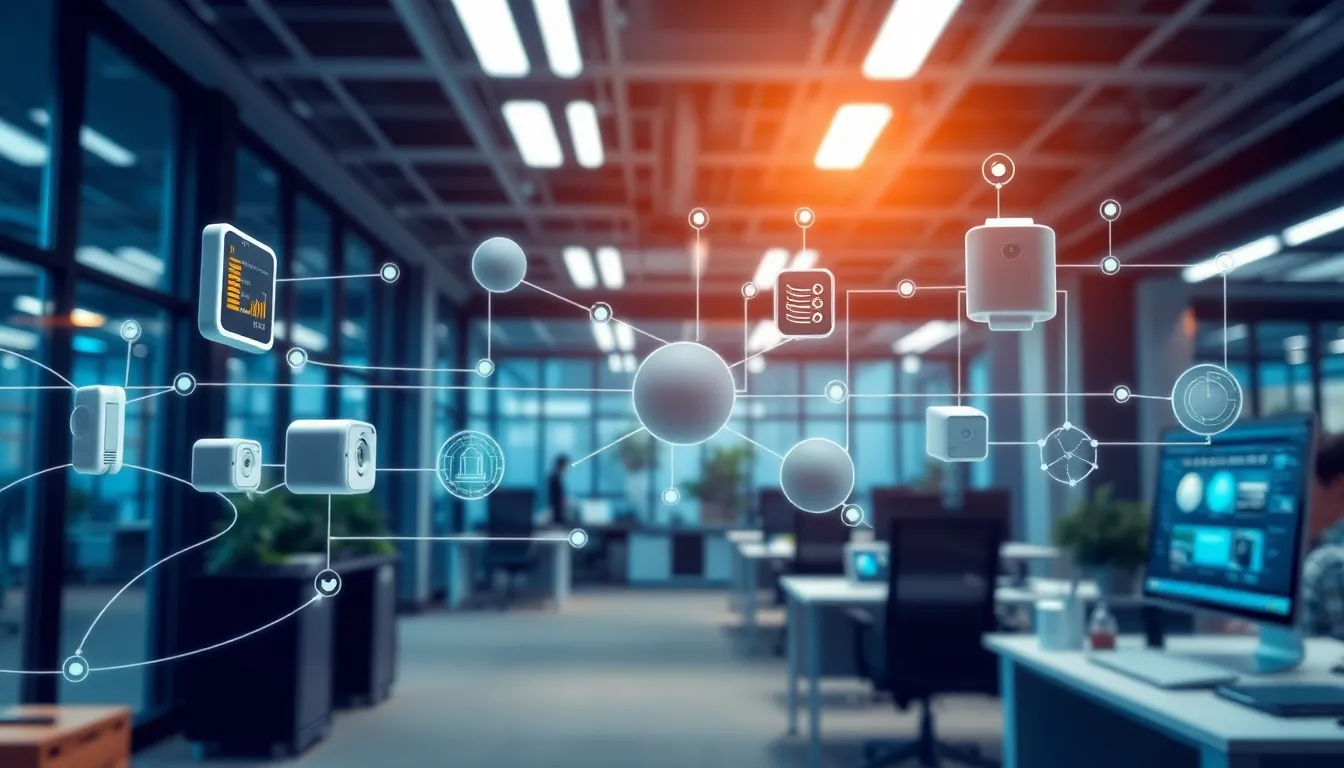Imagine a world where your toaster knows exactly how many slices of bread you need for breakfast and your fridge reminds you when that leftover pizza is about to become a science experiment. Welcome to the Internet of Things (IoT), where everyday objects are getting smarter and more connected. IoT monitoring is the secret sauce that keeps this digital party going, ensuring devices communicate seamlessly and efficiently.
Table of Contents
ToggleUnderstanding Internet Of Things Monitoring
IoT monitoring refers to the process of overseeing and managing IoT devices and networks. This monitoring enables efficient data collection and analysis from connected objects. Sensors play a crucial role in this environment, continuously gathering information and transmitting it for evaluation.
Real-time monitoring allows users to track the performance of devices instantly. Alerts and notifications can inform users about potential issues, enabling timely interventions. Device management becomes streamlined through centralized platforms, simplifying oversight and control.
Data generated by IoT devices contributes to enhanced decision-making. Analytics tools process this information, providing insights into usage patterns and system health. Businesses utilize these insights for optimizing operational efficiency and improving customer engagement.
Security remains a top concern in IoT environments. Effective monitoring solutions include identifying vulnerabilities and detecting anomalies. These measures help protect sensitive data from unauthorized access and cyber threats.
Scalability is another advantage of IoT monitoring. As networks expand, monitoring systems adapt, ensuring consistent performance across multiple devices. Organizations benefit from customizing their monitoring strategies to meet specific needs.
Cost-effectiveness is an essential factor in implementing IoT monitoring. By reducing downtime and enhancing resource management, businesses can lower operational expenses. Investing in monitoring technology yields long-term savings through improved efficiency and productivity.
Understanding the role of IoT monitoring is vital for leveraging the full potential of connected devices. Its impact spans various industries, driving innovation and efficiency. Organizations that prioritize monitoring can enhance their competitive edge and deliver better experiences to users.
Key Components Of IoT Monitoring

The effectiveness of IoT monitoring relies on several key components that drive its functionality. Understanding these components is essential for maximizing device performance and improving operational efficiency.
Sensors and Devices
Sensors serve as the backbone of IoT monitoring by collecting real-time data from the environment. Multiple types of sensors, such as temperature, humidity, and motion sensors, provide diverse information for various applications. Devices equipped with these sensors transmit valuable insights, enabling quick evaluations of conditions. Connectivity between sensors and devices ensures seamless communication across the network. IoT devices also include actuators that perform actions based on sensor inputs, such as adjusting temperature or turning on lights, thereby enhancing automation and user experience.
Data Transmission
Data transmission is critical for IoT monitoring, ensuring timely transfer of data between devices and centralized platforms. Reliability and speed in data communication are paramount, as delayed information can hinder decision-making processes. Various protocols, like MQTT and HTTP, facilitate this transmission by connecting devices to the internet. Secure transmission protocols protect data integrity and privacy, reducing vulnerability to cyber threats. Mesh networks can enhance connectivity by allowing devices to communicate directly with each other, improving overall network stability and performance. Effective data transmission forms the foundation for comprehensive analysis and informed decision-making in IoT ecosystems.
Benefits Of Implementing IoT Monitoring
Implementing IoT monitoring offers several compelling benefits that enhance operational capabilities across various sectors. These advantages streamline processes and enhance decision-making.
Improved Efficiency
IoT monitoring significantly boosts operational efficiency. Devices send real-time data, allowing teams to optimize processes without delay. For instance, in manufacturing, equipment can alert staff about performance issues, triggering immediate maintenance. Efficiency in energy management is also notable; smart grids utilize data to minimize energy waste. Automation reduces the need for manual oversight, letting staff focus on more strategic initiatives. Ultimately, this efficiency translates to faster decision-making and improved productivity across the organization.
Enhanced Data Accuracy
Accuracy in data collection improves through IoT monitoring. Sensors provide continuous, real-time information, ensuring reliable insights into system performance. Enhanced data accuracy helps businesses make better-informed decisions based on precise metrics. For example, smart thermostats maintain optimal temperatures by analyzing usage patterns, promoting energy efficiency. In agriculture, soil moisture sensors deliver accurate readings, guiding irrigation decisions. This consistent precision mitigates risks associated with inaccurate data, ensuring organizations operate on solid information.
Challenges In IoT Monitoring
IoT monitoring faces several significant challenges that can affect device performance and data integrity.
Security Concerns
Cybersecurity poses a major challenge in IoT monitoring. Vulnerabilities in devices can lead to unauthorized access, risking sensitive data. Attackers often exploit weak security protocols to gain control over IoT networks, leading to potential data breaches. Real-time monitoring aims to identify these threats quickly. Robust encryption methods and regularly updated security protocols enhance protection against attacks. Integrating threat detection capabilities into monitoring systems helps detect unusual activities and respond effectively. Organizations must prioritize security to safeguard devices and data.
Data Management
Managing vast amounts of data generated by IoT devices presents another challenge. Continuous data flow can overwhelm storage and processing systems, complicating analysis. Inefficient data management results in delayed insights and hinders decision-making. Implementing data filtering techniques helps prioritize critical information, reducing storage overhead. Data integration from multiple sources streamlines accessibility and usability. Utilizing advanced analytics tools enables organizations to extract actionable insights faster. Prioritizing effective data management ensures timely responses and optimizes resource allocation across IoT networks.
Future Trends In IoT Monitoring
Emerging trends in IoT monitoring forecast profound changes in how devices operate and communicate. AI integration significantly enhances decision-making and predictive analytics within IoT ecosystems. By leveraging machine learning algorithms, systems analyze vast data sets, identifying patterns that inform operational adjustments. Automation becomes smarter as AI continuously learns from real-time data, enabling proactive maintenance strategies to minimize downtime.
Increased automation plays a crucial role in streamlining processes across industries. Smart devices communicate autonomously, reducing human intervention while improving response times. Automated systems help dynamic adjustments in manufacturing lines and energy management, leading to optimized resource utilization. As systems become more interconnected, seamless communication fosters efficiency, ultimately driving innovation and elevating user experience across various sectors.
The rise of IoT monitoring is transforming how devices interact and operate in everyday life. By enabling real-time data collection and analysis, it enhances efficiency and decision-making across various sectors. As organizations embrace this technology, they can expect improved operational capabilities and cost savings.
Addressing security challenges remains crucial for safeguarding sensitive information. With the integration of advanced analytics and AI, the future of IoT monitoring looks promising. This evolution will not only streamline processes but also foster innovation, ultimately leading to smarter and more responsive environments. Embracing these advancements ensures that businesses stay competitive in an increasingly connected world.



